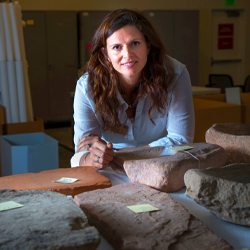Identification of starch granules from oak and grass species in the central coast of California
 Authors:
Authors:
Gloria Howat Brown, Lisbeth A Louderback
Abstract:
Starch granule analysis is commonly used to describe the incorporation of plants into past human diets. However, assigning starch granules to particular plant taxa can be problematic. Here we take a statistical approach to analyzing multiple diagnostic characteristics of starch granules from three species of oak, Quercus agrifolia (coast live oak), Q. douglasii (blue oak), Q. lobata (valley oak) and one species of wild rye (Elymus elymoides) that were collected and consumed by hunter-gatherers in California. Results show significant differences in maximum length and the presence of morphological features (e.g., lamellae, extinction cross, mesial longitudinal clefts, fissures, shape, hilum position, etc.), suggesting that taxonomic assignment of archaeological starch granules can be made with measurable degrees of confidence.
View this publication here
